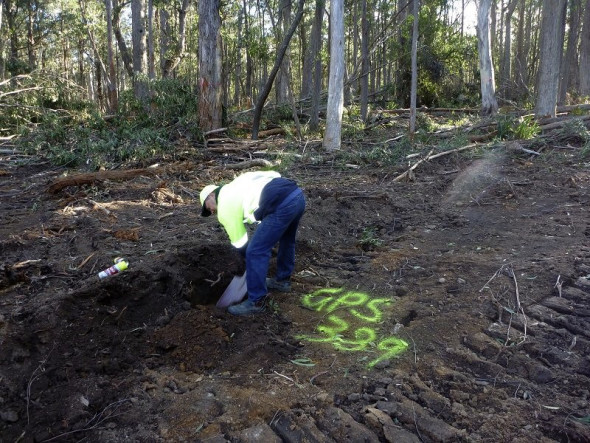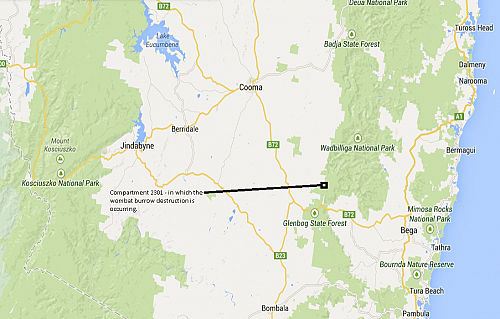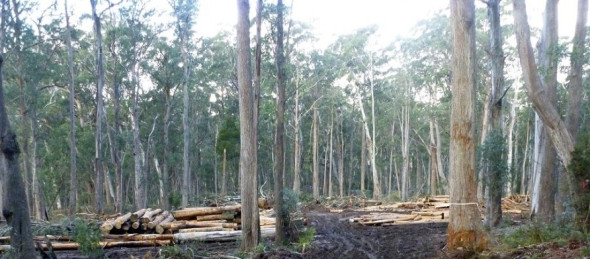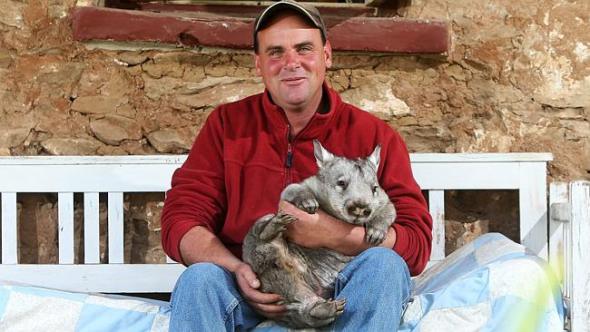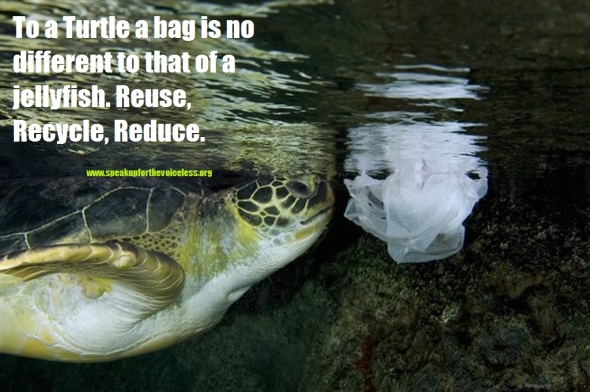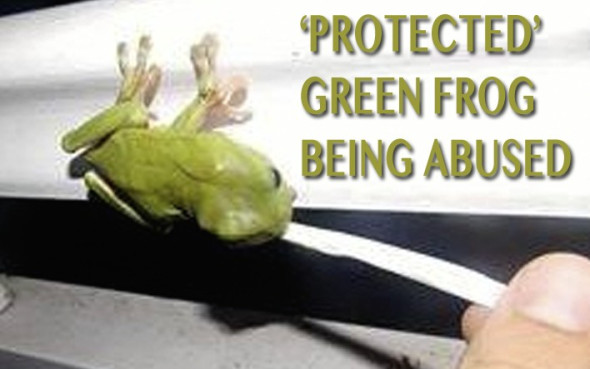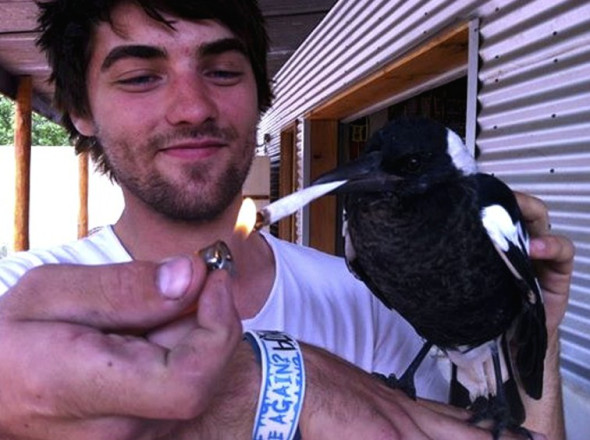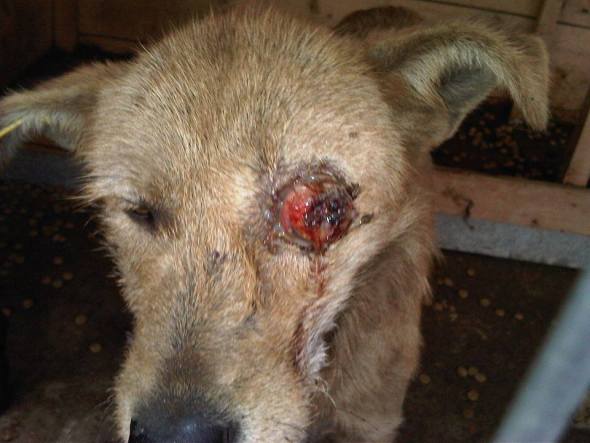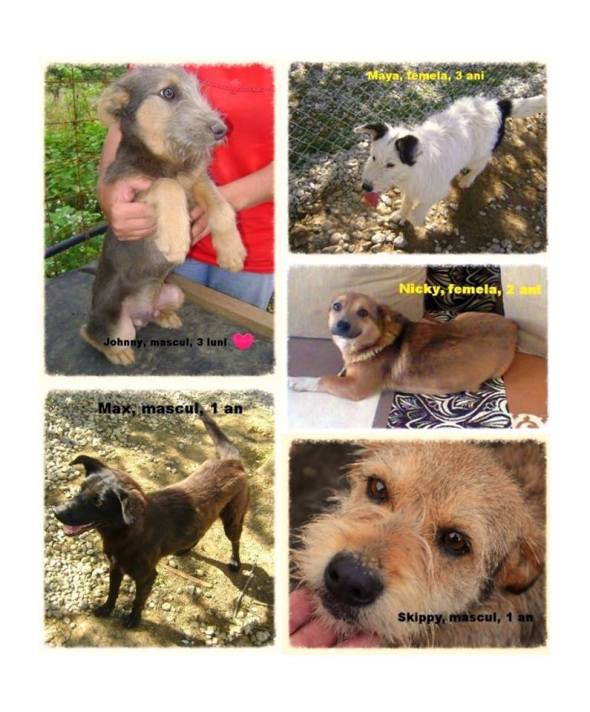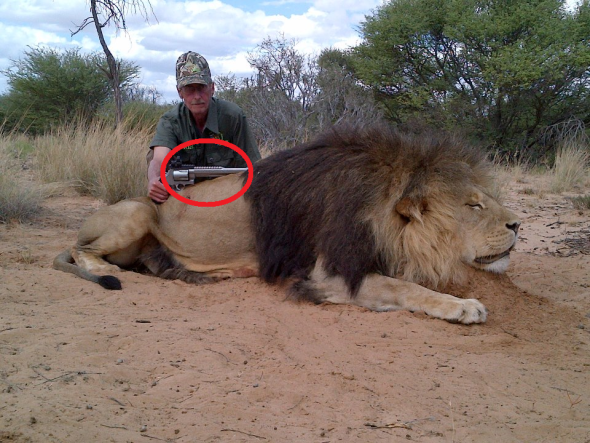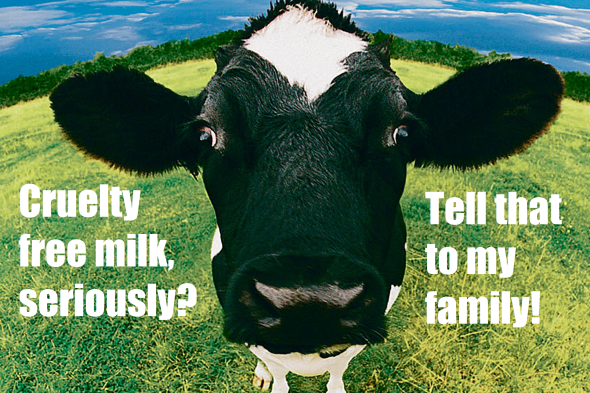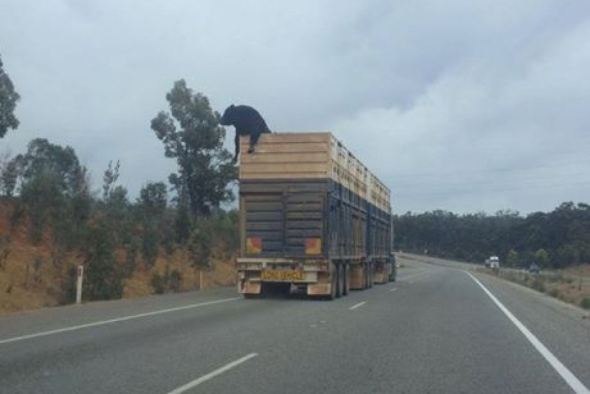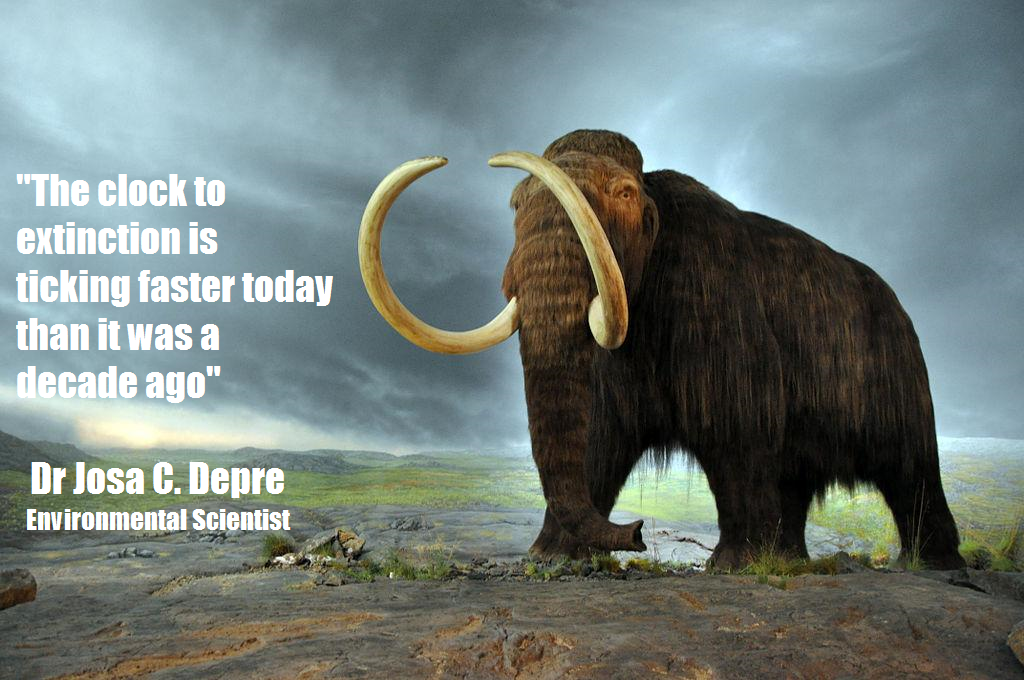
We are losing many species of animals and plants every year at quite a staggering rate never before seen since records began. Goodeid, Baxter’s Toad, Brome des Ardennes, Borrachero, Pele Clermontia, Bastard Gumwood, Hawaiian Crow, Lago Yojoa Palm, La Palma Pupfish, Fuzzyflower Cyrtandra, Père David’s Deer, Blue Cycad, Oahu Deceptor Bush Cricket, Black Soft-shell Turtle and the Scimitar-horned Oryx are just some of the sixty nine species of plant, aquatic mammal and land mammal that have already gone extinct within the wild. Captive breeding programs have been established for some however its unlikely any release back into the wild while habitat destruction, poaching and human over-population continues to increase at a copious rate.
While International Animal Rescue Foundation has recognized the vast decrease of say primates there has been many botanical specimens gone extinct within the wild of which animals and humans depend on. Habitat fragmentation, increased agricultural practices, land loss for ranching, mining or pollution have played pivotal roles killing species of plant and animals off.
Just in Africa alone we have already lost Acalypha rubrinervis, Byttneria ivorensis, Coffea lemblinii, Dryopteris ascensionis, Erythrina Saint Helena Heliotrope – Heliotropium pannifolium, Saint Helena Olive – Nesiota elliptica, Oldenlandia adscensionis, Orchidea eupolyanthis, Pausinystalia brachythyrsum, Sporobolus durus and Saint Helena Ebony – Trochetiopsis melanoxylon all of which are botanical specimens.
Within the Americas we see more extinctions of plants; Roan Mountain False Goat’s-beard, Rio de Janeiro Myrtle, Santa Cruz Bryophyte, Bigleaf Scurfpea and some of the twenty two specimens that have gone extinct within the wild. However its not all just doom and gloom yet. To date we have lost since records began a total of eight hundred and twenty eight species of plant and mammal. Species of plant and mammal that are extinct within the wild stand at sixty nine. International Animal Rescue Foundation notices that many reptiles specifically toads and frogs that are in serious danger of extinction. Tree frogs being the most critically endangered.
Clarke’s Banana Frog, Adelophryne maranguapensis, Tusked Frog, Knysna Banana Frog, Nigeria Banana Frog, Natal Banana Frog and Uluguru Banana Frog are some of the thirty species of frogs known worldwide that a nearing extinction. The vast majority of frogs just listed here are “critically endangered”.
International Animal Rescue Foundation Africa Africa has listed the TOP 5 causes of species extinction;
In at number one
Habitat Fragmentation;

While International Animal Rescue Foundation is against all hunting within the wild or on private land we cannot lay blame to hunters being the main reason for species extinction. Hunters do not hunt plants do they? more traffickers hunt them and only specific plants of which you can read more within the botanical trafficking section.
While most people immediately think of things like meteors or global warming as major causes of extinction, the main source of modern animal and plant extinctions is far less dramatic. Since the dawn of human industry, the leading cause of extinctions has been loss of habitat — animals finding their homes destroyed to the point at which their survival is no longer possible. Habitat fragmentation will remain the sole cause of species extinction and sadly its increasing at a staggering rate.
Pretty much all species are suffering from a loss of diversity. Amphibians are arguably the hardest hit, but mammals, birds and marine life are also experiencing a share of trouble. Intrusions like habitat loss, pollution and climate change are being felt around the globe at historically unprecedented levels. All of this adds up to what could potentially pan out to be the sixth mass extinction on the planet. And that doesn’t bode well for people, as the human population increasingly depends on fewer and less genetically diverse species to meet our ever-increasing needs.
Amphibian extinction remains the largest threat thus far but how does this threat actually impede on human life too?
In wetlands, a decrease in amphibians can cause an increase in insects, their main prey. Other animals that feed on amphibians or their larvae can face a food shortage when amphibian numbers decline. These include birds, reptiles and mammals.
Even more alarming, some researchers say that the same chemicals that cause sexual abnormalities in amphibians have a link to humans. Some studies in the ’90s said men’s lower sperm counts could be due to endocrine disrupters, but these studies are controversial. Other controversial research linked these chemicals to lower IQ scores. More accepted research showed that ultraviolet radiation, the same radiation that affects amphibians, may also be causing greater incidence of skin cancer and eye disease in humans. Humans learn from other species, particularly in developing new drugs, but can’t do so if the species disappear.
In at number two
Agriculture;

Agriculture farming for vegetables and cattle poses quite a significant risk to animals and native wild plants too. While some may believe arable farming is a major threat, it actually poses a lesser threat than that of livestock farming. Livestock farming is also responsible for large greenhouse gas emissions that increases climate change thus having an adverse reaction onto our species of birds and land mammal but more importantly our aquatic life too. Increase in ocean temperatures eventually forces fish and their prey to move to cooler waters, or induces breeding by far more earlier placing young at danger.
The global livestock sector is growing faster than any other agricultural sub-sector. It provides livelihoods to about 1.3 billion people and contributes about 40 percent to global agricultural output. For many poor farmers in developing countries livestock are also a source of renewable energy for draft and an essential source of organic fertilizer for their crops.
But such rapid growth exacts a steep environmental price, according to the FAO report, Livestock’s Long Shadow –Environmental Issues and Options. “The environmental costs per unit of livestock production must be cut by one half, just to avoid the level of damage worsening beyond its present level,” it warns.
When emissions from land use and land use change are included, the livestock sector accounts for 9 percent of CO2 deriving from human-related activities, but produces a much larger share of even more harmful greenhouse gases. It generates 65 percent of human-related nitrous oxide, which has 296 times the Global Warming Potential (GWP) of CO2. Most of this comes from manure.
And it accounts for respectively 37 percent of all human-induced methane (23 times as warming as CO2), which is largely produced by the digestive system of ruminants, and 64 percent of ammonia, which contributes significantly to acid rain. Please do take this point on board with regards to Rhino farming. With such a high demand for Rhino horn we would require a increase in Rhino framing. Rhinos are ruminants and produce large piles of manaure.
Livestock now use 30 percent of the earth’s entire land surface, mostly permanent pasture but also including 33 percent of the global arable land used to producing feed for livestock, the report notes. As forests are cleared to create new pastures, it is a major driver of deforestation, especially in Latin America where, for example, some 70 percent of former forests in the Amazon have been turned over to grazing.
Land and water
At the same time herds cause wide-scale land degradation, with about 20 percent of pastures considered as degraded through overgrazing, compaction and erosion. This figure is even higher in the drylands where inappropriate policies and inadequate livestock management contribute to advancing desertification.
The livestock business is among the most damaging sectors to the earth’s increasingly scarce water resources, contributing among other things to water pollution, euthropication and the degeneration of coral reefs. The major polluting agents are animal wastes, antibiotics and hormones, chemicals from tanneries, fertilizers and the pesticides used to spray feed crops. Widespread overgrazing disturbs water cycles, reducing replenishment of above and below ground water resources. Significant amounts of water are withdrawn for the production of feed.
Livestock are estimated to be the main inland source of phosphorous and nitrogen contamination of the South China Sea, contributing to biodiversity loss in marine ecosystems.
Meat and dairy animals now account for about 20 percent of all terrestrial animal biomass. Livestock’s presence in vast tracts of land and its demand for feed crops also contribute to biodiversity loss; 15 out of 24 important ecosystem services are assessed as in decline, with livestock identified as a culprit.
If we do not start to practice more greener methods of agriculture we will only lose more species of plant and mammals. This in turn will not just affect animals globally but would also have quite an adverse reaction on to humans. Remember we rely on amphibians for instance to keep insect populations down. Bats and birds too. Without them we will suffer.
In at number three
Human Over-population;

Human growth + need for more natural resources + deforestation for grazing and food = land loss and animal extinction. That’s about as simple as this majorly large problem can be narrowed down into one sentence. But just how bad is human over-population affecting wildlife?
Taking America as our first prime example. There is a total of twelve species of animals affected just by human over population. Figures for the 2012 census placed the number of people living within America at a whooping 313.9 million. From 1991 there were some 219.9 million people within America. From 1991 figures increased dramatically that saw in 2002 212.1 million people within America. Since 2002 figures have shot up and they do not look set to decrease either. This rapid increase of human over population has placed twelve species of native American mammals in danger of nearing extinction.
Florida panther, Atlantic blue fin tuna, Loggerhead sea Turtle, Sandplain gerardia (botanical specimen), Lange’s metalmark butterfly, Mississippi gopher frog, White River spinedace, Polar bear, Gulf sturgeon and the San Joaquin kit fox have all been noted as seriously under threat from mass human growth just within the United States of America alone. As the human population grows and the rich countries continue to consume resources at voracious rates, we are crowding out, poisoning and eating all other species into extinction. With the world population hitting 7 billion. The 10 species represent a range of geography, as well as species diversity — but all are critically threatened by the effects of human population. Some, like the Florida panther and Mississippi gopher frog, are rapidly losing habitat as the human population expands. Others are seeing their habitat dangerously altered — like the small flowering sandplain gerardia in New England — or, like the bluefin tuna, are buckling under the weight of massive overfishing. Still others, like the polar bear, are facing extinction because of fossil fuels driving catastrophic global warming.
Below are some startling facts on human over population released this July on Wold Population Day.
- As of 1 January 2014, the world’s population was estimated to be 7,137,661,030, and increases by 2.3 people every second.
- The total number of people who have ever lived has been estimated by the Population Bureau to be around 108 billion.
- The world population is estimated to have reached one billion in 1804, with two, three and four billion in 1927, 1960 and 1974 respectively.
- These figures mean that about one fifteenth of all the people who have ever lived are alive today.
- Vatican City (800) and Nauru (9,378) are the states with the lowest populations.
- 30% of the world’s population generally eat with chopsticks.
- China, India, USA, Indonesia, Pakistan and Brazil account for half the world’s people. More than one in three people are Chinese or Indian.
The human population is now so large that the amount of resources needed to sustain it exceeds what is available at current consumption patterns,” said Mr. Achim Steiner, the executive director of the United Nations Environment Program in 2007. According to the Global Footprint Network (GFN), “Today humanity uses the equivalent of 1.5 planets to provide the resources we use and absorb our waste. This means it now takes the Earth one year and six months to regenerate what we use in a year.
…Turning resources into waste faster than waste can be turned back into resources puts us in global ecological overshoot, depleting the very resources on which human life and biodiversity depend.”
According to GFN, this overshoot is having a drastic effect on the world’s flora and fauna: “The threats facing the rich array of plant and animal life on the planet seem greater than at any time in modern history. Problems such as climate change, water shortages, overharvesting and habitat disruption - symptoms of human pressure on the planet’s finite resources - are driving down wildlife populations worldwide.”
Harvard Professor E.O. Wilson estimates that, “…on the land at least and on a worldwide basis, species are vanishing 100 times faster than before the arrival of Homo sapiens.” He adds that, “Today as human populations expand and alter the natural environment, they are reducing biological diversity to its lowest level since the end of the Mesozoic era, 65 million years ago.”
Read AWI’s Human Overpopulation brochure about the impacts of human population and consumption on the natural environment and ways each individual can make a difference by consuming less, consuming differently, and conserving more.
In at number number four
Deforestation;

Deforestation is clearing Earth’s forests on a massive scale, often resulting in damage to the quality of the land. Forests still cover about 30 percent of the world’s land area, but swaths the size of Panama are lost each and every year. The world’s rain forests could completely vanish in a hundred years at the current rate of deforestation.
Forests are cut down for many reasons, but most of them are related to money or to people’s need to provide for their families.The biggest driver of deforestation is agriculture. Farmers cut forests to provide more room for planting crops or grazing livestock. Often many small farmers will each clear a few acres to feed their families by cutting down trees and burning them in a process known as “slash and burn” agriculture.
Logging operations, which provide the world’s wood and paper products, also cut countless trees each year. Loggers, some of them acting illegally, also build roads to access more and more remote forests—which leads to further deforestation. Forests are also cut as a result of growing urban sprawl. Not all deforestation is intentional. Some is caused by a combination of human and natural factors like wildfires and subsequent overgrazing, which may prevent the growth of young trees.
Deforestation has many negative effects on the environment. The most dramatic impact is a loss of habitat for millions of species. Seventy percent of Earth’s land animals and plants live in forests, and many cannot survive the deforestation that destroys their homes. Deforestation also drives climate change. Forest soils are moist, but without protection from sun-blocking tree cover they quickly dry out. Trees also help perpetuate the water cycle by returning water vapor back into the atmosphere. Without trees to fill these roles, many former forest lands can quickly become barren deserts.
Removing trees deprives the forest of portions of its canopy, which blocks the sun’s rays during the day and holds in heat at night. This disruption leads to more extreme temperatures swings that can be harmful to plants and animals. Trees also play a critical role in absorbing the greenhouse gases that fuel global warming. Fewer forests means larger amounts of greenhouse gases entering the atmosphere—and increased speed and severity of global warming. The quickest solution to deforestation would be to simply stop cutting down trees. Though deforestation rates have slowed a bit in recent years, financial realities make this unlikely to occur.
A more workable solution is to carefully manage forest resources by eliminating clear-cutting to make sure that forest environments remain intact. The cutting that does occur should be balanced by the planting of enough young trees to replace the older ones felled in any given forest. The number of new tree plantations is growing each year, but their total still equals a tiny fraction of the Earth’s forested land.
As one can see here deforestation is related significantly to human over population of which remains the number one threat not just to animals but to ourselves too. Many people forget this key point. Should deforestation continue at such a high rate it will have adverse effects onto human health. We will lose many species of “medicinal plants” that pharmaceutical giants rely on producing many non-synthetic medications for humans, This would mean more animals would be required for pharmacology experimentation’s using synthetic medications.
Even if deforestation was to stop today animals released back into the environment from protective captivity would still not survive. Here’s why below;
Even if deforestation in the Amazon were to miraculously be halted tomorrow, and of course it will not be, a whole legion of creatures that have been scarred by its impacts would go extinct anyway. That’s the finding of a depressing new study that shows how animals who lose their habitats don’t die off immediately, but instead start winding down a multigenerational, often irreversible death spiral.
When species lose their natural habitat to deforestation and other causes, they don’t immediately disappear. Instead, they gradually die off over several generations, racking up an “extinction debt” that must eventually be paid in full. New research shows that the Brazilian Amazon has accrued a heavy vertebrate extinction debt, with more than 80 percent of extinctions expected from historical deforestation still impending.
As such, there are a number of animals still living in the Amazon today that will almost certainly perish in coming years, no matter what we do. Here are some of those not expected to survive: White-cheeked spider monkey, Rio Branco antbird, Tree ocelot.
Deforestation entwines with habitat fragmentation, agriculture and human over population.. …Sadly there will be no end until the global governments take much harsher steps to control the rate of land loss. Below are some startling facts on deforestation:
Deforestation Facts;
- Facts 1: Forests cover 30% of the earth’s land.
- Facts 2: It is estimated that within 100 years there will be no rainforests.
- Facts 3: Agriculture is the leading cause of deforestation
- Facts 4: One and a half acres of forest is cut down every second.
- Facts 5: Loss of forests contributes between 12 percent and 17 percent of annual global greenhouse gas emissions. (World Resources Institute)
- Facts 6: If the current rate of deforestation continues, it will take less than 100 years to destroy all the rainforests on the earth.
- Facts 7: The rate of deforestation equals to loss of 20 football fields every minute.
- Facts 8: There are more than 121 natural remedies in the rain forest which can be used as medicines.
- Facts 9: According to Rainforest Action Network, the United States has less than 5% of the world’s population yet consumes more than 30% of the world’s paper.
- Facts 10: The over exploitation of forests is making it extremely difficult to replant a new ecology.
- Facts 11: 20% of the world’s oxygen is produced in the Amazon forest.
- Facts 12: Up to 28,000 species are expected to become extinct by the next quarter of the century due to deforestation.
- Facts 13: 25% of cancers fighting organisms are found in the amazon.
- Facts 14: 13 million hectare per year in South America and Africa and south East Asia is converted from a forest to an agriculture land.
- Facts 15: Deforestation has considerably stopped in places like Europe, Pacific, North America and some parts of Asia due to lack of agricultural land.
- Facts 16: Half of the world’s tropical forests has already been cleared.
- Facts 17: 4500 acres of forests are cleared every hour by forest fires, bull dozers, machetes etc.
- Facts 18: Poverty, over-population and unequal land access are the main causes of man- made deforestation.
- Facts 19: The total world forest loss till date is 7.3 million hectares per year.
- Facts 20: 1.6 billion people across the globe depend on forest products for their livelihoods there by adding more to deforestation.
- Facts 21: Almost half of world’s timber and up to 70% of paper is consumed by Europe, United States and Japan alone.
- Facts 22: Industrialized countries consume 12 times more wood and its products per person than the non-industrialized countries.
- Facts 23: The United States has less than 5% of the world’s population but consumes more than 30% of the world’s paper.
- Facts 24: Fuel wood in sub Saharan African countries is consumed up to 200% times more than the annual growth rates of the trees. This is causing deforestation, lack of timber resources and loss of habitat for the species living in it.
- Facts 25: Trees are important constituents of the ecosystem by absorbing carbon.
- Facts 26: Soil erosion, floods, wildlife extinction, increase in global warming, and climate imbalance are few of the effects of deforestation.
- Facts 27: Worldwide more than 1.6 billion people rely on forests products for all or part of their livelihoods.
- Facts 28: Tropical forests, where deforestation is most prevalent, hold more than 210 gigatonnes of carbon.
- Facts 29: According to Forestry Department Food and Agriculture Organization of the United Nations, about half the world’s tropical forests have been cleared or degraded.
- Facts 30: Tropical rainforests which cover 6-7% of the earth’s surface, contain over half of all the plant and animal species in the world!
- Facts 31: Deforestation affects water cycle. Trees absorb groundwater and release the same into the atmosphere during transpiration. When deforestation happens, the climate automatically changes to a drier one and also affects the water table.
- Facts 32: The world’s forests store 283 billion tons of carbon present in the biomass.
The online business
- Fact 33: Money to save trees is majorly collected online.
- Fact 34: One can save up to 20 square feet of forest with online contributions thereby conveniently prevent deforestation.
- Fact 35: Over 4 million tons of junk is created online by spamming.
- Fact 36: 41 pounds of these junk mails are sent to almost every adult in the United States.
- Fact 37: 44% of the junk mail goes unopened.
- Fact 38: People in America spend more than 275 million dollars to dispose junk mails.
- Fact 39: The paper industry is fourth largest in producing greenhouse gas thereby majorly contributing to deforestation.
- Fact 40: On an average, a person in the United States uses more than 700 pounds of paper every year.
Take the right action
- Fact 41: A lot of paper and cardboard is used unnecessarily for packing. This means more tree felling.
- Fact 42: Re- use paper and plastic bags to discourage deforestation.
- Fact 43: Use canvas or paper bags as another alternative.
- Fact 44: Pick products which require less packaging.
- Fact 45: Be creative and mail manufacturers telling them to use eco-friendly products. Show them your deforestation knowledge by highlighting certain important facts using statistics.
- Fact 46: Sign effective petitions that work and help reduce deforestation.
- Fact 47: Support eco-friendly companies buy buying their products that promise more durability in an inexpensive way.
- Fact 48: Be active and plant trees- it can be at your homes, backyards or you can join any organization keen on stopping deforestation.
- Fact 49: Reduce the consumption of beef to tone down the pressure to clear more forests for the cattle.
- Fact 50: Boycott companies by supporting organizations that care about the environment at the cost of fighting back for the evergreen trees.
- Fact 51: Seek knowledge on deforestation and how can you prevent it from happening by reading newspapers, magazines, internet, TV shows. Spread the word and make it go viral.

To fell or not to fell is not up to the woodcutter, but surely depends on you. Be the change and eliminate the disturbing statistics on deforestation. It takes not guts, but love and compassion for nature to save trees from being felled.
In at number 5
Poaching and Hunting;

Hunting while it is permitted and governed by worldwide environmental authorities, ministries and agencies such as the Convention on International Trade of Endangered Species Wild Flora and Fauna sees a “controlled and regulated” practice of “sustainable harvesting” or trophy sport killing that is not sustainable harvesting as it is only for the game of sport. Hunting for food is again “controlled” and limits or quotas are implemented as to what animals can be hunted, when and where at what time of the day and night. The “quota” is in place so that hunters do not kill too many species of animals that could see them pushed into extinction. Cites is the main governing body that hunters have to abide too, least forgetting the countries that they hunt within.
For example in South Africa if hunters wanted to slaughter hundreds of Rhinoceros every year and coupled with the poaching crisis we’d not have any Rhino left roaming within South Africa that is custodian to the worlds largest Rhino population at just under 18,800. One white Rhino is hunted per year by one individual hunter. The hunter within that year is not allowed to hunt anymore Rhino when he or she has shot dead the Rhino.
3-4 Black Rhino hunts are permitted by law within their range. South Africa and Namibia are two examples. Limitations on black Rhino hunts are in place due to the species verging extinction. however their populations are now on the increase. Every year a hunter who is able to obtain a permit for black Rhinos can not hunt no more than one and laws govern state that in that year no more than four Rhino are allowed to be hunted. There is no “restriction” with regards to the white Rhino of which one hunter as explained can hunt one white Rhino per year. Permits are freely handed out to hunt white Rhino however as explained only 3-4 permits are handed out per year and no more to hunt black Rhino.
While hunting has been seen to reduce wildlife specimens hunting is not actually the primary cause for wildlife depletion which I have explained above from 1-4. Poaching is not regulated - they basically take what they want, when they want regardless of whether there are laws in place. Poachers have decimated many African wildlife species such white Rhino, Lion, Elephant, Pangolin and more. So lets split this into two categories.
Hunting;
As we know it the Dodo, Tasmanian Tiger, Passenger Pigeon, Great Auk, Quagga, Falkland Island Wolf, Zanzibar Leopard, Caribbean Monk Seal, Carolina Parrot, Atlas Bear, Toolache Wallaby, Sea Mink, Bubal Hartebeest and the Stellar’s Sea Cow have all be hunted into extinction. To date the named specimens above no longer remain within the wild or within protective captivity.
Hunting has been around since humans were placed onto Mother Earth. Extinction is not a new danger to animals either. Since the Ice Age humans pushed many animals from extant to extinction.
A new study has revealed that human hunters are responsible for wiping out the population of large animals in Ice Age. Sabre-toothed cats, huge kangaroos, and a leopard-sized marsupial lion are some of the animals that were pushed to extinction by human hunters during the Ice Age. The findings of the study have debunked the belief that climate change led to extinction of many ice age animals.
The study saw examination of the pattern of extinction for 177 species between 132,000 years and 1,000 years ago. Researchers found that most of the animals that time died because of increased human population.
“We consistently find very large rates of extinction in areas where there had been no contact between wildlife and primitive human races, and which were suddenly confronted by fully developed modern humans”, said Jens-Christian Svenning, professor at the Aarhus University in Denmark.
Svenning said at least 30% of the large species of animals was forced to extinction from all such areas. It was during the Pleistocene Epoch, when the last Ice Age occurred. This period is defined as the one that began 1.8 million years ago and lasted until around 11,700 years ago.
During the course of a little more than the last 100,000 years, modern man started to spread from Africa to all parts of the world.
The findings of the study suggested that modern man killed several large species when arrived in the new continents. The reason behind the extinction of many ice age animals could be either their population’s incapability to sustain human hunting or humans might have killed their prey. The researchers have reported their findings in the journal Proceedings of the Royal Society B.
Had there been some laws or even Cites in the Ice Age it may have stopped such extinction occurring. We are talking about the Ice Age here though and no such governing bodies even existed or would have to be honest.
Scientists from the Universities of Stirling, Oxford, Queensland and the Wildlife Conservation Society warn that current hunting trends in Central African forests could result in complete ecological collapse.
The authors maintain that the current rate of unsustainable hunting of forest elephants, gorillas and other seed-dispersing species threatens the ability of forest ecosystems to regenerate, and that landscape-wide hunting management plans are needed to avoid an environmental catastrophe.
The study appears in the latest version of Philosophical Transactions of The Royal Society B. The authors include: K.A. Abernethy of the African Forest Ecology Group of Stirling University; L. Coad of the University of Queensland and the University of Oxford; G. Taylor of the University of Oxford; M. E. Lee of the Wildlife Conservation Research Unit and University of Oxford; and Fiona Maisels of the Wildlife Conservation Society and the African Forest Ecology Group.
“Humans have lived in the forests of Central Africa for thousands of years, until recently practicing subsistence hunting for the needs of their communities,” said Kate Abernethy, lead author of the study. “Over the past few decades, this dynamic has drastically changed. Much of the hunting is now commercially driven, and species that play important ecological functions are being driven to local extinction.”
The researchers conducted a review of more than 160 papers and reports on the region’s wildlife declines, hunting trends, and land-use analyses by humans. The authors found troubling trends that threaten the very fabric of rainforest ecosystems. In particular, mammals such as forest elephants, gorillas, forest antelopes and others play a major role in seed dispersal for most tree species; the removal of these mammals by bushmeat hunters disrupts forest regeneration.
Furthermore, previously untouched swathes of forest are being penetrated by roads, and subsequently degraded by logging and agriculture. In other areas, forests are cleared and replaced by single-species plantations of oil palm, rubber trees, and crops for biofuels. The authors warn that such plantations greatly reduce areas available for seed dispersing wildlife.
“Another emerging problem for Central Africa’s forests is the migration of large numbers of people into remote forests, around the new plantations and the mining and logging camps,” said WCS Conservationist Fiona Maisels, a co-author on the study. “This population growth creates additional hunting pressures on previously lightly populated areas.”
The authors point out that good hunting management practices and planning must be included in any climate change strategy or land use plan in Central Africa. They add that efficiently managed multiple-use landscapes — combining protected areas alongside logging concessions — can maintain the seed-dispersing species while maintaining game species for hunting needs.
A top priority, the researchers assert, should be the protection of megafauna such as forest elephants and apex predators such as leopards in order to maintain intact ecosystems in Central Africa. Otherwise, the loss of wildlife will result in a disastrous spiral of forest degradation that will reduce the storage of carbon and the resilience of rainforests to climate change.
“Current climate models suggest that Central African rainforests may be more ecologically resilient to the short-term impacts of climate change than those of West and East Africa, or the Amazon,” said co-author Dr. Lauren Coad. “However, severe ecological changes below the forest canopy, driven by hunting, are already occurring. The removal of seed-dispersing megafauna such as elephants and apes could reduce the ability of forests to sequester carbon.”
“The clock is ticking on the future of large mammals in Central Africa’s Congo Basin Rainforest, and with them on the future of the forests themselves and all the people who depend on them,” said Dr. James Deutsch, Executive Director of WCS’s Africa Program. “The people, the forests, and the wildlife need an emergency effort to bring illegal and unsustainable hunting under control.” Much of the data analyzed for this study was collected with the support of the US Fish & Wildlife Service and USAID’s Central Africa Regional Program for the Environment.
So OK that’s more hunting for food but what about trophy hunting?
Among the most coveted of the “Grand Slam,” or the most prestigious trophy animals, is the Brown Bear. The Kodiak Bear (Ursus arctos middendorffi) of Alaska represents a major trophy for hunters who come from all around the world to kill large males. This bear exceeds other subspecies in size, weight and skull size. These bears have been isolated since the end of the last Ice Age, and the abundant food supply of salmon runs, berry bushes and other edible plants in their habitat has produced this giant bear (Chadwick 1990). Trophy hunters pay $20,000 or more to private hunting guides for the privilege of shooting these bears. A recent study has revealed a potentially disastrous effect on the species of this trophy hunting. According to The Kingdom. Wildlife in North America, by the respected author and National Geographic Society correspondent Douglas Chadwick, “Continued harvesting of the biggest animals by trophy hunters has caused a decline in the average size of Kodiak Bears over the years” (Chadwick 1990). Thus, this record-size animal is gradually becoming smaller and smaller as a result of trophy hunting.
The pressure of hunters on some populations of Alaskan bears is so intense that it has altered the behavior of males, preventing their normal feeding on salmon runs. On Admiralty Island in southeastern Alaska, part of the Tongass National Forest, tourists watch female Brown Bears fishing with their cubs, but rarely see males because they have become so wary of people after years of being hunted; even females without cubs can be hunted on Admiralty Island (Crittenden 1997). The rich salmon rivers on this island are among the world’s most productive, and since clearcutting of timber has been banned, salmon thrive in the clear water. Salmon is an important portion of the diet of male bears, yielding a great deal of protein and helping to fatten them for the winter. By frightening the male bears from the salmon rivers, which they have fished for thousands of years, humans may be affecting the health, survivability and size of these bears. Each year more than 40 Brown Bears are killed on Admiralty, and hunters are lobbying to reopen hunting in areas such as Pack Creek that are now closed to protect the fishing spots (Hanson 1998). This island deserves to be declared a National Park, which would protect these bears from hunting.
Another effect of hunting male bears has recently been documented by Swedish and Norwegian biologists, who found that in areas where resident adult male Brown Bears had been killed to thin the population, bear cubs suffered very high mortality for several years until dominant males reoccupied the territory (O’Neil 1997). Male bears, who have traditionally been considered threats to cubs, may be a danger only to cubs they have not fathered. Thus, the killing of bears by sport and trophy hunters may also result in the deaths of hundreds of bear cubs.
Russian Brown Bears have been hunted heavily in recent years. When a prominent government official, Prime Minister Viktor S. Chernomyrdin, announced early in 1997 that he wanted to trophy hunt a Brown Bear, local guides bulldozed a path to the den of a sleeping female bear (Filipov 1997). Tractors plowed a campsite for a large tent with mobile kitchen and cafeteria, and the Prime Minister flew in by helicopter (Filipov 1997). Chernomyrdin, accompanied by 12 hunters, rode a skimobile to the site, roused the bear and killed her two cubs and the mother. This incident received much adverse publicity in Russia. When the Prime Minister was criticized for his lack of sportsmanship, he replied: “What’s wrong with that? Hunting of bears is not banned; it’s a normal thing . . . I’d like to watch those who are writing about this meet those bears eye to eye to see their reaction” (Filipov 1997).
In Greece and Turkey, where Brown Bears are avidly hunted in spite of their dwindling numbers, cubs orphaned when their mothers are killed are often sold to zoos or to gypsies who treat them abusively. This trade is illegal in both countries, and the World Society for the Protection of Animals (WSPA) has saved many of these gypsy bears, who are dragged through the streets with nose rings and made to perform tricks. WSPA has placed several hundred of these abused bears in large wooded compounds, unfettered for the first time in their lives. Some had to be euthanized because of severe infections that had caused them extreme pain and serious physical disabilities that they had endured for many years without veterinary treatment. The majority suffered the effects of malnutrition.
The animals trophy hunters seek-the finest specimens-are the very ones that should be left in the wild to maintain the species. Killing the largest specimens of a species, subspecies or population is likely to diminish it in size and survivability. This would seem elementary, but trophy hunters, state game departments, many in the Fish and Wildlife Service, the World Wildlife Fund and other organizations in favor of trophy hunting do not discuss or acknowledge this fact. Claims are made on behalf of trophy hunters that only old and non-breeding adults are killed, but this contention has been proven wrong in case after case. Brown and Grizzly Bears continue to breed until an advanced age. Other trophy animals have also been shown to be at their prime when shot.
Lions are a prime target of trophy hunters, who select the largest male specimens, especially those with enormous manes. Two filmmakers, Derek and Beverly Joubert, in producing their dramatic series, “Lions of Darkness” for the National Geographic Society, followed three exceptionally large males for a long period. These magnificent Lions spent most of their lives in a national park in Botswana, but made the fatal mistake of leaving the park and entering a wildlife management area where trophy hunting was allowed. All were shot within a short time at the prime of their lives by trophy hunters.
Trophy hunting took a tragic and highly controversial turn when the government of Tanzania sold trophy hunting rights for African Elephants at more than $4,000 per animal in the early 1990s. The 2000 IUCN Red List of Threatened Species classifies this species as Endangered. The government claimed that the largest animals, which for trophy hunters were the most desirable, were not active breeding males, but past the breeding age and, therefore, “excess.” Tanzania issued 50 permits a year for trophy-hunted elephants (Brody 1994). At least four very tame bull elephants that had been studied for decades in Amboseli National Park in southern Kenya by biologist Cynthia Moss, author of two classic books, Echo of the Elephants and Elephant Memories, wandered into Tanzania in 1994, where they were shot at point-blank range by trophy hunters (Moss 1995). The hunters had received CITES permits from the Tanzanian government to export the tusks as hunting trophies (Moss 1995). Northern Hunting Enterprises, which organized the Tanzanian elephant hunt, is run by Rick Trappe, a German Tanzanian; the hunters were two Germans and an American (Brody 1994). One of the bulls killed, called “R.B.G.,” was 47 years old at the time of his death, based on aging of the jaw-not old in elephant years-and so habituated to vehicles that he could be easily approached to within a few feet (Moss 1995). Cynthia Moss said she was “devastated” by the loss of the animals, who had come to trust researchers, tourists and rangers. She stated: “The message they got from us was, ‘It’s OK, we’re not going to hurt you, you can trust us.’ Then one day they walk two kilometers into Tanzania, where they’d been going for most of their lives, and they’re blown away . . . I feel as if was lying to them” (Brody 1994). A spokesperson for the African Wildlife Foundation said: “The ethics of shooting these virtually tame animals is appalling. You can’t call this a hunt of any kind” (Brody 1994). Had R.B.G. not been shot, he would have lived another 18 years, according to Moss (Brody 1994).
These were among a relatively small number of large, old bull elephants left in East Africa, protected through the ivory slaughters of the 1980s by the presence of field researchers and tourists. The assertion that they were non-breeding males was refuted by Moss, who had documented that they were active breeders and, in fact, among the top breeding bulls in the Amboseli population (Brody 1994). This disputes the view that they were not contributing to the gene pool and were “excess,” worthy only of being used as targets. After protests and adverse publicity on television programs that reached the United States and elsewhere, Tanzania announced a ban on trophy hunting of elephants near the Tanzania/Kenya border on December 13, 1994, and initiated an investigation into the granting of permits to shoot the Amboseli bull elephants. It is hereby noted that trophy hunting has led to species decline even if regulated or non-regulated. Furthermore trophy hunting would not have been banned in Kenya, Tanzania, Botswana and Zambia had sufficient evidence proved that hunting was actually benefiting the entire gene pool and species of many animals. We would like to see hunters debate this however never seem too.
Poaching;
Hunting is no different from poaching in reality. Poaching requires no permit. However it must never be confused with hunting. Poaching has fulled many trades from drug trafficking, people smuggling, arms trade down to prostitution. Poaching has seen many species of animals made extinct and is officially out of control within Africa.
Most rare and precious African fauna and flora species are on the verge of extinction, today more than in the past years following increased illegal trade in the past decade as global demand for these increases on daily basis.
Game poaching has been singled out as the greatest threat that could lead to the extinction of wild animals like elephants, leopards, Rhinoceros, gorillas and buffaloes among other African animals, making these species more endangered like never before.
The demand for lucrative elephant tusks, rhinoceros horns, game meat, skins and hides has been shifted to Africa making illegal poaching more lucrative as traffickers devise new tactics to elude wildlife authorities. Demand for aloe vera, cycads, plant succulents and other rare plant species found on the African continent, in the fast growing global cosmetic, food and beverage industries has doubled, threatening to wipe out these rare plants off the face of the earth if African countries don’t act fast to avert the situation.
Consequently, African states which haven’t acceded to the Lusaka Agreement on Cooperative Enforcement Operations Directed at Illegal Trade in Wild Fauna and Flora have been encouraged to do so if a united front to combat this illegal and criminal practice is to be formed.
This call was made by wildlife conservation experts and policy makers from different African countries during the regional 9th Governing council of the parties to the Lusaka agreement meeting held recently, in Kampala.
The Lusaka Agreement adopted in 1994 by east and southern African countries is a platform for these countries to unite and combat illegal trafficking and trade in wild fauna and flora, though some countries in the region have been adamant as far as acceding to and ratifying the agreement is concerned.
Three of the five east African Community member states, that is Uganda, Kenya and Tanzania have signed this agreement together with the Democratic Republic of Congo (DRC), while Rwanda and Burundi are yet to sign the agreement which has listed, among other animals, Mountain Gorillas as one of those species most endangered and threatened into extinction by illegal poaching activities.
Rwanda, Uganda and the DRC are the only countries in the world with Mountain Gorillas and experts have warned that these tourist attractions could become extinct in the years to come if much more is not done to protect them from the wrath of poachers.
There are only 720 of these Mountain Gorillas, surviving today.
Recent research also reveals that demand for hardwood timber on the world market has led to illegal tree felling and timber logging activities in the equatorial forests which are home to Mountain Gorillas, putting their habitat at risk.
Speaking at the regional meeting the Kenyan minister for Tourism and Wildlife Conservation, Dr. Noah Wekesa blamed the increased poaching activities in the region to the proliferation of small arms accessed by poachers and on weak legislation saying that even if caught, such criminals are able to walk away scot-free since there are no strong laws to punish the culprits.
“We should amend our laws to strongly deal with these individuals harshly and on this we should bring on board as many nations as possible,” noted the Kenyan official.
The Ugandan Minister of state in charge of Tourism and Wildlife, Serapio Rukundo, called upon countries in the Great Lakes Region to dedicate more funds to wildlife conservation towards fighting and eliminating poaching and sensitizing the population on the dangers of poaching.
“There should be total abolition of illegal poaching. For example if Gorillas are killed, a lot of revenue is lost. Gorillas are core to tourism,” Rukundo said.
Rukundo said that the demand for wild animals such as Rhinos and Leopards is increasing yet little is being done to protect them.
Despite many African countries being parties to the Convention in Trade on Endangered Species (CITES), research shows that Africa still faces a bigger challenge in protecting natural resources and endangered species as the figures have remained the same since 1990.
Data from the Lusaka Agreement reveals that over 20.000 elephants are killed in Africa annually and the ivory worth over $20m is exported to China, USA and Japan where it has a lucrative ready market.
There is also a ready market for rhino horns, hippo teeth, primates like Gorillas and African monkeys, skins of leopards, zebras, cheetahs, giraffes, pythons, turtle shells, coral shells, snakes, crocodiles, birds and many other species found in Africa, grossing over $120m in illegal trade.
Participants singled out China’s over ambitious penetration into Africa and demand of raw materials such as minerals to feed its booming industrial sector as the current single threat to African bio-diversity and ecosystem which poses a great danger if not checked soon. China’s activities in Africa have of late been receiving scathing attacks from environmental activists as most of them disregard the environment.
The United Nations Environment Programme pledged support to African States towards enforcing and implementing environment laws and policies in the battle to conserve the environment and meeting global targets and goals such as MDG’s, the message from the UNEP Executive Director Marko Burglund reveals.
While we all focus on the “demand” for animal parts Dr Allmindinger a German Environmentalist stated that this is just the tip of a very large ice berg. “It’s not just demand within Asia that law enforcement teams must focus on, while civil wars rage out of control so will poaching as poaching is funding up to 67% of all illegal arms trades with the remainder government funding”.. Governments like America and Great Britain must remember that when they cease funding of arms to arm rebels its the wildlife that pays for it in the long run”..
Conclusion;
The five main threats above to our wildlife whether it be to animals or plants is increasing and will continue to rage out of control until we have eventually nothing left remaining within the wild. Although this predicted big extinction is by far years away when they are gone they are gone for forever. From mega-fauna to plants and reptiles to birds everything living and breeding is in dire need of protection. Human overpopulation will most certainly be the biggest threat to wildlife. Overpopulation is not going to decrease anytime soon and sadly Planet Earth does not grow any larger. Something eventually has to give. There is no easy answer to stem the vast wildlife hemorrhaging. All we can to do is continue to increase education, awareness, demand bans are implemented on hunting practices, one baby per family rule as seen within China and so on. If it takes drastic measures to reduce wildlife loss then so be it. If we lose we have became a very destructive force. Humans are a menace to themselves and its most likely humans will eventually one day end up killing themselves off due to greed and want.
Thank you for reading
Dr Josa C. Depre
Environmentalist and Botanical Scientist.

